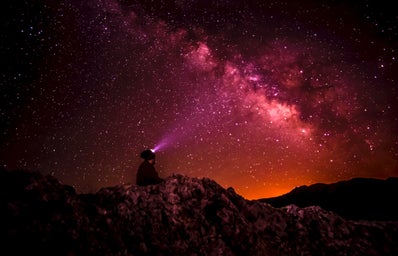Ancient Egypt has a vast mythology that is deeply rooted in the natural world. Part of worship was to construct magnificent temples for their deities. Not only were these temples for worship, but they were often also for tracking the stars significant to that deity. While there are many examples of this however a prominent one throughout Ancient Egypt was the goddess Isis and the star Sirius. Isis was the goddess of healing and magic and was a major character in Egyptian mythology, particularly due to the fact she is the wife of Osiris and the mother of Horus Her mythology is deeply linked to the Nile and the rest of the natural world as the Ancient Egyptians viewed it.
There are many separate temples of Isis however there are two of notable interest, a main temple in Philae and a small temple in Dendera. The temple in Dendera is actually a secondary temple, with the main temple being a temple to Hathor. These temples are a part of the Dendera Temple Complex and are among the best preserved temples in Egypt despite the fact that the temple to Isis is in much worse condition than the main temple to Hathor. There is evidence that this complex has been around since the Late Ptolemaic period with renovations and additions added as late as the Roman period. The Dendera temple complex remains a popular tourist destination to this day. The Dendera complex is in Luxor on the west bank of the Nile. It is thought to be the only surviving sanctuary of three that used to dot the Nile. Unfortunately, while the temple to Hathor has mostly survived, the small temple to Isis behind it is all but ruined. The temple on Philae however is in much better condition. This condition is thought to be a result of the island of Philae being isolated from most attacks as it was open to the worship of many gods. However, the Temple of Isis on Philae was threatened when the High Damn was being proposed in 1960, which would cause currents that would destroy all monuments on Philae as they would be submerged the entire year instead of most or part of it. Egypt decided to move the temples to Agilkai in order to protect them. As the temples were being dismantled, it was found that a vast majority of the bricks were in fact bricks from older monuments that had been reused. All of the monuments were rebuilt in a record time of 30 months and Agilkai was opened to the public in March 1980. Thus Isis has two temples that are rather well preserved compared to other temples that would have been significant to the Ancient Egyptians.
The Goddess Isis is associated with the star Sirius, the brightest star in the sky. While all temples are associated with a specific star, Isis is connected to Sirius for a religious reason. It was said in Ancient Egypt that the Nile flooded due to Isis filling it with her tears while mourning her husband Osiris.. Coincidentally, Sirius becomes visible once more in the night sky as the Nile begins to flood and it is not visible for approximately 70 days, the same amount of time as the ancient Egyptian preparation and mourning perio). The temple at Dendera only points to Sirius however it is thought that the temple at Philae is cross sectioned between Sirius and Canopus. Isis’s association with Sirius is prevalent throughout mythology and it even impacted the architecture and location of her temples.
Within the temple to Hathor, in a stone chapel, there are engravings on the ceiling that correspond to the Egyptian zodiac. While thousands of years old, it remains a well preserved depiction of all visible stars and planets making it closer to a star map than an astrological chart. One of the many interesting designs of the Dendera Zodiac is the fact that it shows the five planets on the chart in an extremely rare alignment that allowed astrophysicists to date the particular sky, although it did take them quite a while as the Rosetta Stone had yet to be deciphered, therefore the meanings of all of the hieroglyphs remained a mystery. Using the sky shown, astrophysicists were able to date the sky shown between July 54 BCE to August 50 BCE. Despite the date, there is another school of thought behind the Dendera Zodiac. This thought states that the Dendera Zodiac is a catalogue of constellations that had been compiled over time rather than a snapshot of a particular sky. While this theory had evidence to back it up, it is based in heavy Hellenic connections to the zodiac even though not all of the images are Greek and does not explain as to why a zodiac would be included in an Egyptian cult complex. Overall, the argument that the Dendera Zodiac represented a snapshot of the night sky is more widely accepted.
While the Ancient Egyptians had a rich mythology connected to the natural world, no connection stands out quite as much as the connection between Isis, Sirius, and the Nile. All three were important to the Ancient Egyptians for vastly different reasons however they all came together in mythology. This connection inspired some of the best preserved temples from Ancient Egypt and one of the best examples of deities being connected to the natural world. Not only is Isis often present in depictions of the sky due to her connect to Sirius, she is also prevalent in almost all aspects of Ancient Egyptian culture due to her status in mythology. This not only implies that the Ancient Egyptians watched the stars closely, it also shows that they gave meaning to the natural world in a way that made sense with what they already knew of the world.

